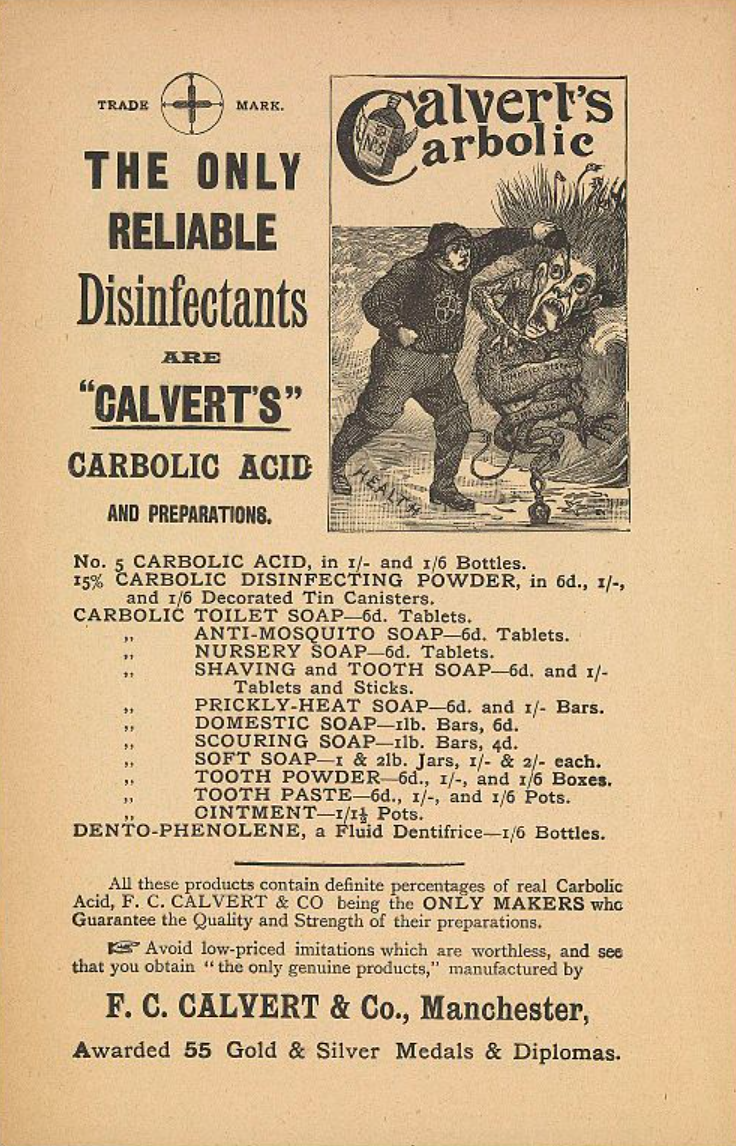Disinfectants: Use of Different Types of Sanitization Techniques in 18th and 19th Centuries Britain and India

Published 2021-09-09
Keywords
- Disinfection,
- Sanitization,
- Detoxification,
- Public Health,
- Medicine
- Chemical Compound,
- Metal ...More
How to Cite
Copyright (c) 2021 Chetan Sain

This work is licensed under a Creative Commons Attribution 4.0 International License.
Abstract
The article focuses on the use of different kinds of disinfectants used for sanitization and cleaning of public and private places for curbing the spread of diseases from one place to another. Multiple methods were employed for disinfection; some of which are easily accessible to the common people while others were particularly used in infirmaries and hospitals at the time of treatment. The article also shows that disinfectants were supplement to medicine and they target limiting of the contagion to a space whereas medicines were given for the treatment of patients. Historically, the eighteenth and nineteenth centuries witnessed unprecedented development in the field of chemistry which led to the discoveries of different types of antiseptic solutions and disinfectants apparently endorsed by the germ theory.
Image Credit: Wellcome Library, London. Wellcome Images images@wellcome.ac.uk http://wellcomeimages.org
References
- United States, Environmental Protection Agency, 2020 List N: Disinfectants for Use Against SARS-CoV-2, 2020 Retrieved from website: https://www.epa.gov/pesticide-registration/list-n-disinfectants-use-against-sars-cov-2
- Ministry of Health and Family Welfare, India, Covid-19: Guidelines of Disinfection of Common Public Places Including offices, 2020 Retrieved from: https://www.mohfw.gov.in/pdf/Guidelinesondisinfectionofcommonpublicplacesincludingoffices.pdf
- Richard Cold Newton, A Brief Study of the Contribution of Ignaz Philip Semmelwies to Modern Medicine. William Wood Company, New York, 1910, p 12. Retrieved from https://archive.org/stream/b28978250/b28978250_djvu.txt
- Ibid. p 12. Retrieved from https://archive.org/stream/b28978250/b28978250_djvu.txt
- George F. Elliot, “The Germ Theory.” The British Medical Journal, 1870, 1: 489. Retrieved from
- https://www.jstor.org/stable/25218933
- Seymour S. Block, (Ed.) Disinfection, Sterilization and Preservation. Philadelphia: Lippincott Williams & Wilkins, 2001, p 3.
- J. Blancou, “History of Disinfection from Early Times until the End of the 18th Century.” Rev. Sci. Tech. Off. Int. Epiz., 1995, 14:1, p 35. Retrieved from https://www.oie.int/doc/ged/d8963.pdf
- Biswamoy Pati and Mark Harrison, (Ed.) The Social History of Health and Medicine in India. Delhi: Routledge, 2009, p 306.
- Michael Bennett, War Against SmallPox: Edward Jenner and the Global Spread of Vaccination. Cambridge: Cambridge University Press, 2020, p 26.
- “Disinfection of Mail.” Vadophil: Quarterly News Bulletin. Vadodra: 131-132, 2012, p 12. Retrieved from http://www.vadophil.org/
- R. Basu Roy, “Sexually Transmitted Diseases and the Raj.” Sexually Transmitted Infections. 1998, 74:1, p 21. Retrieved from https://sti.bmj.com/content/74/1/20
- Nilanjana Deb, “(Re)moving bodies: People, ships and other Commodities in the coolie trade from Calcutta.” in Commodities and Culture in the Colonial World. Ed. Supriya Chaudhuri, Josephine McDonagh, Brian H. Murray & Rajeswari Sundar Rajan. New York: Routledge, 2018, p 326.
- Sir James MacNabb Campbell, Report of the Bombay Plague Committee – Appointed by the Government Resolution no 1201/7201 on the Plague in Bombay for the period extended from the 1 July 1897 to the 30 April 1898. (Bombay: Times of India Steam Press, 1898, p 197. Retrieved from https://archive.org/details/b24974535
- A. J. McLaughlin. “Cholera: Its Nature, Detection and Prevention” Public Health Reports. 1910, 25:44, p 1577
- Michael Sigsworth and Michael Worboys, “The Public’s View of Public Health in mid-Victorian Britain.” Urban History, 1994, 21:2, p 242. DOI: https://doi.org/10.1017/S0963926800011044
- Ibid p 246. DOI: https://doi.org/10.1017/S0963926800011044
- Srabani Sen, “Indian Cholera: A Myth.” Indian Journal of History of Science, 2012, 47:3, p 367. Retrieved from https://insa.nic.in/writereaddata/UpLoadedFiles/IJHS/Vol47_3_2_SSen.pdf
- Michael Sigsworth and Michael Worboys, “The Public’s View of Public Health in mid-Victorian Britain.” Urban History., 1994, 21:2 p 241. DOI: https://doi.org/10.1017/S0963926800011044
- J. R. Martin, Notes on the Medical Topography of Calcutta, Calcutta, 1837, p 43
- E Carrick Freeman, The Sanitation of British Troops in India. London: Redman Limited, 1901, p 8
- E. H. Hankin was British bacteriologist and naturalist who studied malaria, cholera and other diseases. Hankin worked under the guidance of Robert Koch in Berlin and then with Louis Pasteur in Paris. In 1892, Hankin was offered the position of chemical examiner, bacteriologist and government analyst by the United Provinces and the Central Provinces. Retrieved from https://www.jstor.org/stable/43430692
- Stuart Anderson, “Travelers, Patent Medicines, and Pharmacopeias: American Pharmacy and British India, 1857 to 1931.” Pharmacy in History. 2016, 58:3-4, p 66. https://www.jstor.org/stable/10.26506/pharmhist.58.3-4.0063




